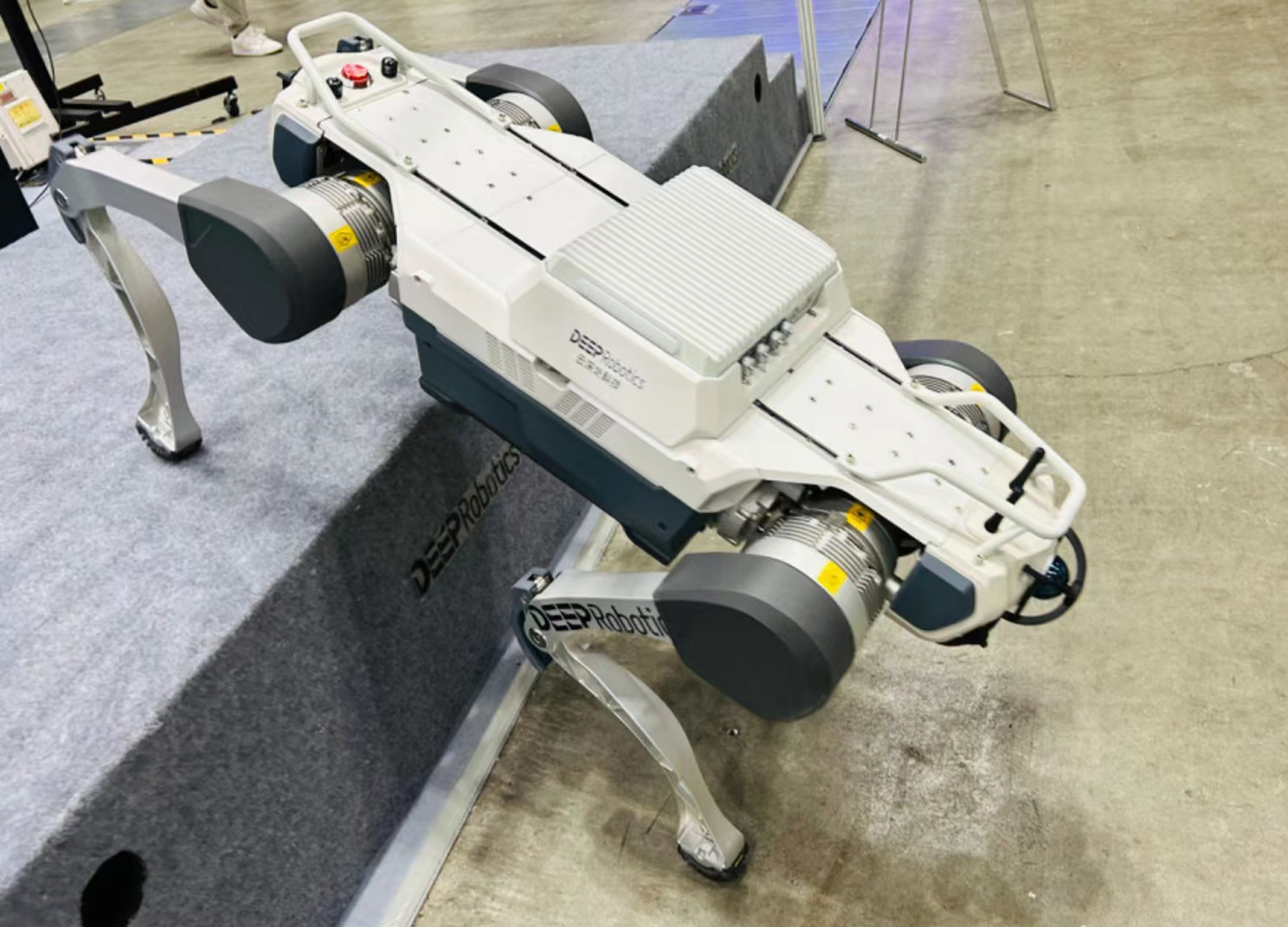Industrial Application Quadruped Robot

Lite3

The X30 and the Lite3, two quadrupedal robot models from DEEP Robotics, showcase their locomotion and perception capabilities at the 2024 IEEE ICRA in Yokohama, Japan from May 13 to 17.
Yokohama, Japan, May 14, 2024 -- DEEP Robotics, a leading quadrupedal robot developer, yesterday began to participate in the 2024 IEEE International Conference on Robotics and Automation (ICRA) in Yokohama, Japan, showcasing the company's latest advances in AI reinforcement learning and robotic technologies.
At the conference, held from May 13 to 17, Hangzhou-based DEEP Robotics aims to present AI innovations that pave the way for its smaller and full-size quadrupedal robots to complete a series of highly complex and even acrobatic movements.
The Lite3, one of the company's signature robot dogs, can scurry across a stack of large boxes, leap across gaps, navigate around stairs, and climb easily onto an elevated platform about a half meter tall.
A more stunning feat is that the Lite3 can shift its center of gravity when tossed in the air, spin its body and land on its four feet, or quickly roll over after falling on its back.

The Lite3, in action during a parkour demonstration, can scale elevated platforms that are at least 50 centimeters tall.
“We successfully applied the Proximal Policy Optimization (PPO) method combined with depth camera sensor inputs and trained an end-to-end policy,” Zunwang Ma, a robot control engineer at DEEP Robotics, said in a speech yesterday at the 2024 IEEE ICRA.
“This approach effectively broaden the limitations of traditional model-based control methods, enabling our quadruped robot to traverse high platforms and gaps without requiring precise perception and robot modeling,” Ma noted.
Meanwhile, the X30, a larger, industrial-grade robot dog also produced by DEEP Robotics, amazed visitors with its autonomous adaptation to an array of unstructured, uneven surfaces such as grass, gravel, and rubble.
The X30 stands out with the ability to traverse rugged terrains and navigate random objects with ease. It is designed to withstand external interference like pushing or pulling, maintaining its balance, which proves to be a big advantage in outdoor operations.

The X30 climbs up stairs in a demonstration at the 2024 IEEE ICRA.
Built to IP67 standards, the robot is able to function under the rain, on plateaus or Gobi deserts, or in any challenging environments with huge variances in temperature, altitude or degrees of humidity.
Algorithmic improvements
Through a series of algorithmic innovations and reinforcement learning iterations, engineers from DEEP Robotics have given a huge boost to the dexterity, autonomy and self-balancing abilities of Lite3 and X30.
In the case of Lite3, it gains enhanced motion control capabilities on the back of intensive AI training. In a simulation mode, an avatar of the robot is always kept initially at a slant, said Ma, the engineer.
By devising reinforcement learning policies and setting up rewards to guide the avatar, AI engineers enable the quadruped to shift in the air and maintain its dynamical balance in the virtual world.
Other improved metrics of Lite3 include faster walking speed, topping up at 4 meters per second. When pushed to its limits, the robot can scramble up platforms higher than 50 centimeters, as well as jump over a 80-centimeter-wide gap.
For its part, DEEP Robotics' X30 robot, when it comes with a depth camera, lidar and other type of sensors, is capable of perceiving the surrounding environment on the fly and thus figuring out its next steps.

Zunwang Ma, a robot control engineer at DEEP Robotics, delivers a speech at 2024 IEEE ICRA.
‘AI-Plus Plan’
The company is looking to incorporate advanced AI technologies into its robotics systems under a "DEEP Robotics AI-Plus Plan" to enable bigger breakthroughs in embodied AI.
Application-wise, legged robots from DEEP Robotics have proven practical in an array of use cases including autonomous inspection, emergency detection and rescue.
Overall, thanks to a large amount of data acquired from real-world application of its products, DEEP Robotics has met with relatively fewer difficulties in the sim-to-real transfer, meaning the deployment of robotics algorithms to a physical robot prototype.
Going forward, the company aims to integrate reinforcement learning further into its development to broaden the application scenarios of its robots and explore the next frontiers of AI-powered robotics.
"With reinforcement learning, we can use fewer policies to achieve greater terrain adaptation and coverage , making the robot more robust and intelligent," Ma explained.
Under DEEP Robotics' AI-Plus Plan, product capabilities will extend further to facets like perception, planning, decision-making and human-machine interaction. DEEP Robotics' products have been widely adopted in more than a dozen countries in North America, Western Europe, Japan and Korea, the Middle East and other regions.



 Wechat
Wechat
 Bilibili
Bilibili
 LinkedIn
LinkedIn
 Youtube
Youtube
 Twitter
Twitter
 Douyin
Douyin